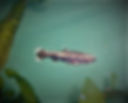Nannastomus Mortenthaleri -- the “Coral Red” Pencil Fish
- matthewchambers11
- Dec 17, 2018
- 4 min read
By Don Kinyon
A very colorful small characin from the Rio Nanay basin in Peru, the “coral red pencil fish” or Nannostomus mortenthaleri may just be the perfect aquarium fish. It’s hardy, easy to keep, accepts most any foods offered, is adaptable to most water conditions and is not extremely hard to breed in captivity. This fish, in fact, is one of the best of the “dither fish” that I’ve ever found. Its small size, pleasant demeanor, and extremely small mouth (Nannostomus actually translates to “small mouth”) mean it can be safely used to make many species of small cichlid or catfish more comfortable.
Paepke and Arendt described the fish in 2001 and it was first considered a subspecies of N. marginatus. When it was officially named, Martin Mortenthaler was honored, as he first discovered the species.

N. mortenthaleri is a small pencil fish, the female reaches up to one and one-half inches and is the larger of the pair in my experience. Like most pencil fish, they are very slender as well. The belly and back of the fish is olive drab to brown in color, and there are two white stripes running the length of the body. What really sets this fish apart from most others is the bright red stripe starting at just above the mouth, through the eye and running to and through the tail. The fins are bright red, apart from the pectorals, which are usually clear. The males are somewhat more slender and more brightly colored than the females.

The water conditions for the fish in nature are varied, but is almost always fairly soft and acidic. These fish are sometimes found in blackwater habitat which can be very low pH and extremely low in conductivity. In the aquarium, I’ve had this fish in everything from cool water Corydoras tanks at 180 PPM total dissolved solids, and pH in the mid sevens, to blackwater Apistogramma tanks over 80°F and a pH near 4.0, 0 PPM of TDS. They thrive in either extreme, but do seem to show better color in the warmer, softer water.
There was a bag lot of three of these great little fish in a rare fish auction I attended and even though I wasn’t sure if both sexes were represented, I bid high and won the lot. The three small fish’s first home was a small tank, around 5 gallons, with a sponge filter, sand bottom and large mass of java moss. Water was straight rain water with a pH of 5.5 and had little or no TDS. There was no heater in the tank and the temperature fluctuated between 74° and 78°F. They were offered a variety of foods: mosquito larvae, daphnia, newly hatched brine shrimp, flake and freeze-dried prepared foods. Most everything was accepted with gusto. Water changes were 50% once a week.
Once the fish had been eating well for a week or so, it was clear that at least one of the three was a male. The others ( I think) were female. After the pencil fish had spent a few weeks in the new home, some very small fry could be seen near the surface of the water. I always “flashlight” the tanks after the lights have been out for an hour or so to check on the fish. It’s proved to be a great tool for spotting fry or catching natural behavior of more nocturnal species. During the lighted hours the young fish were never within view, but hung at or near the surface in the dark. Once the fry were noticed, the adults were moved to an adjacent tank with the same water and set up to start the process over again. The first spawn was in the spring, so the outside tubs were teeming with micro foods which could be strained and fed to the young fish. The fry browsed on the strands of java moss as well, so had plenty to eat.
The abundant food turned out to be a lifesaver for the brood, as it turned out. As they grew, it was clear that there were a considerable number of young fish. A quick count came to 70, but with the way the fish moved and all the cover in the tank, it was clear that number was conservative. The young fish grew quickly and in a few weeks they were about half an inch long. Water changes started at 50% every second day, then every day, then twice daily as the fish grew (not the easiest task with a small tank and a large number of fish, but I was out of space). By this time the N. mortenthaleri were large enough to take flake food as well as the smaller live foods, and they were large enough to move around into other tanks as unplanned dither fish. I never got an exact count of the brood, but it was well over 100.
The second tank setup proved to produce around the same number, and the third a little smaller. Possibly, age is catching up with the parents or maybe they’re just tired.
I’d recommend this species for almost any hobbyist that can reserve a tank for smaller fish. They aren’t aggressive toward other fish, are easy to keep and are one of the most attractive fresh water aquarium fish available. I don’t see any downside to keeping them at all. Okay; probably not a good idea to put them with Oscars. 😉
